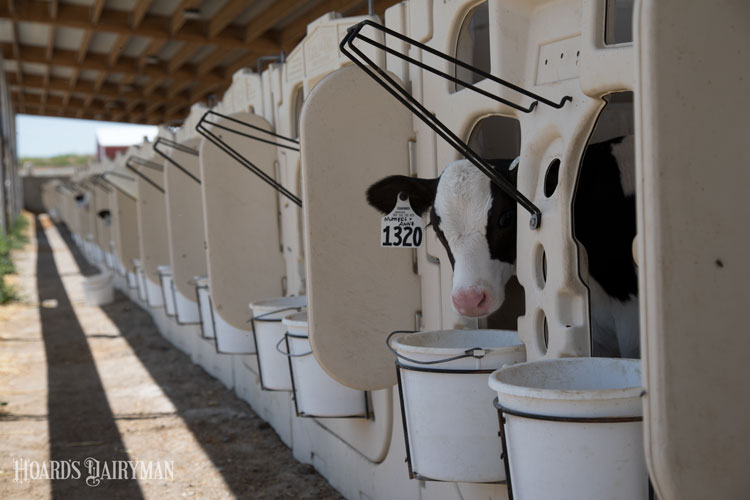
The perfect combination of milk residue, the right pH, and temperature spell trouble for even the toughest calves. Those conditions ringing the edge of buckets, bottles, and nipples are the perfect storm for bacteria growth.
Otherwise known as biofilm, the buildup lining calf feeding devices are a breeding ground for explosive growth of bacteria. According to Attica Veterinary Associates’ Sam Leadley, the bacteria that grow in biofilms can cause problems for developing calves.
“Persistent feeding of bacteria-contaminated milk is almost certain to result in excessive rates of scouring calves,” he stated in a recent Calving Ease newsletter. “Even if the bacteria are not as pathogenic as coliforms (for example, Strep species and Staph species), when they are present in overwhelming numbers, there seems to be a suppressing effect on the calf’s overall immune system.”
Biofilms built up on calf feeding equipment house and develop bacteria so that when contacted again with fluid milk, the bacteria are swept off the surface of the bucket, bottle, or feeder and into the fluid milk.
That’s why he recommends testing milk fed to the calves at several points — raw, after pasteurization, and at feedout. Leadley said it should be done more often in cases of farms that struggle with scour challenges.
To ensure the best samples are taken for comparison and to determine the presence of bacteria in as-fed milk, Leadley suggested these five sampling practices.
1. Use a sterile collection container.
2. Reduce contamination at sampling by wearing gloves or having clean hands.
3. Only fill the container half full to prevent containers from breaking open during freezing.
4. Get the sample cold as quickly as possible after sampling.
5. If nonsaleable milk is pasteurized, sample raw, pasteurized, and fed milk for comparison.








